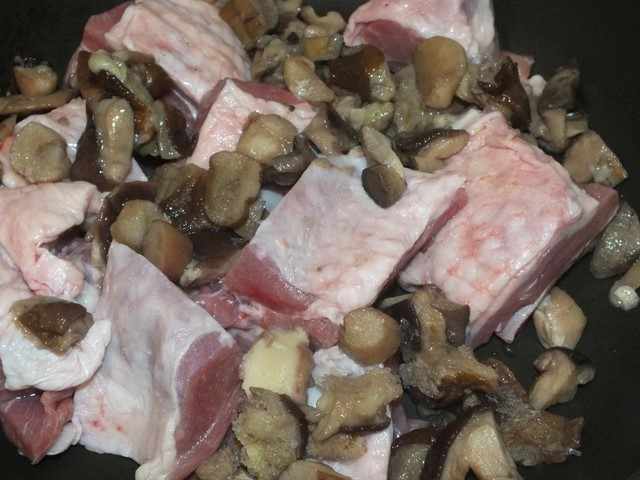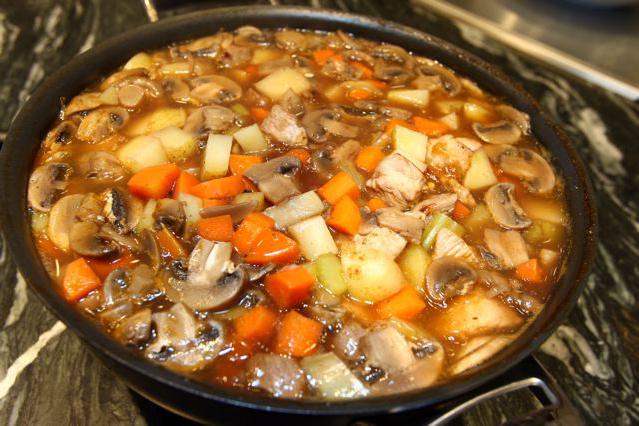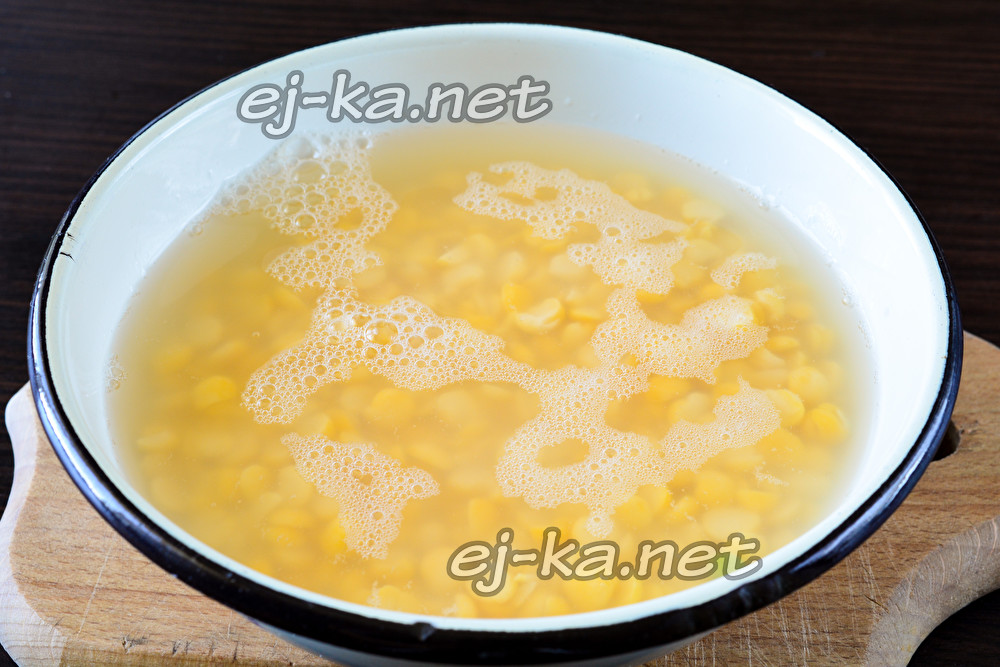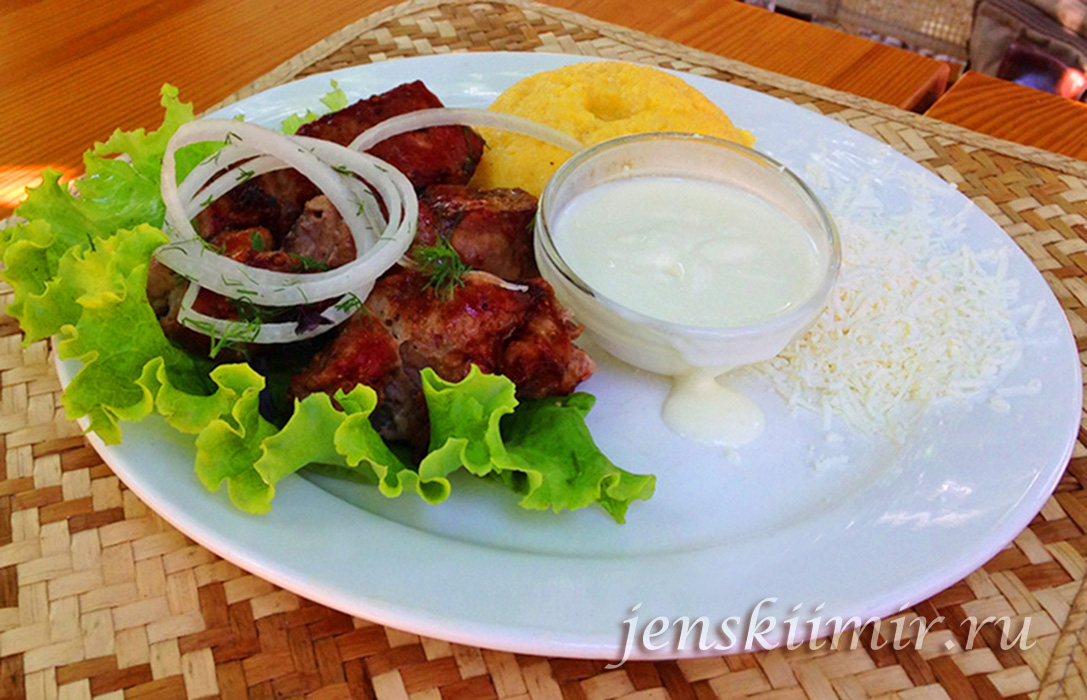Khinkali dough. Khinkali: a step by step recipe
Italian ravioli ... Which kitchen doesn't have a dish that looks like a bag of dough with minced meat inside? In the countries of Transcaucasia, this food is called "khinkali". It is clear that dishes differ from each other not only in name. Each of them has its own regional characteristics. Khinkali also have them. This feature consists in the fact that broth must also be contained inside the dough bag. And the meat (in the traditional recipe it is lamb) is cut into tiny pieces with a dagger and mixed with herbs.
The art of sculpting khinkali is the skill of creating many folds. It should really be a bag, not a bag (dumpling). Visually authentic khinkali looks like it is tied with a thread. Given this specificity, the requirements for the test are special. After all, it must be very elastic and at the same time strong, so that the broth does not flow out ahead of time. In this article, we will look at how to make khinkali dough. Making Caucasian dumplings is a whole art, and we will try to master it.
Classics and legal innovations
Previously, the rules for preparing this dish were strict. Meat of mountain goats or domestic sheep was used for the filling. The minced meat was flogged with a dagger. Only salt, black pepper, dill and cilantro were added there. Khinkali dough also did not require many ingredients: only flour, water and salt. Sometimes an egg was added to it. But kneading the dough was very laborious. But the effort spent has paid off handsomely. The dough came out soft and elastic, well kept tightness during cooking. The size of the khinkali varied, depending on the regional characteristics. Somewhere they were the size of a walnut, and sometimes one "dumpling" took up the whole plate. But what all khinkali had in common was the shape of the bag with numerous folds. What is permissible for a modern chef who wants to taste the delicacies First, expensive lamb can be replaced with beef or pork. Minced meat is allowed to pass through a meat grinder. But the dough for khinkali, if you want to get a bag of broth, must be prepared according to the traditional recipe.
Kneading
Sift three glasses of flour into a deep bowl. Add a few pinches of salt. We make a depression on the top with our finger, and pour a glass of water into it. It must be icy - that is the requirement. Stir with a fork. When the mass begins to more or less resemble dough, we transfer it to a table sprinkled with flour and knead for a long time. It should turn out to be elastic and stop sticking to your fingers. When you have achieved this, cover the khinkali dough with a napkin and leave for thirty minutes. For now, tackle the stuffing. Add two minced onions to 500 grams of minced meat and pour in a glass of ice water or broth. The filling absorbs liquid well. It will come out damp and slightly viscous, but dense.
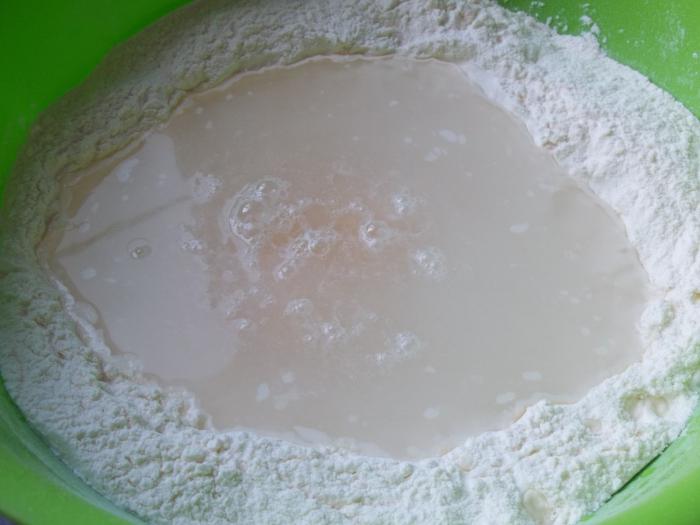
Another one for khinkali
Sift the flour (half of the amount indicated in the above method) with a slide, mix with salt. Pour in a glass of broth. In a separate bowl, shake the egg with a fork and add to the “crater” as well. After making a squeeze, put it on a table sprinkled with flour. The dough will be very sticky at first. Therefore, the palms should also be immersed in flour from time to time. After the first, longest, kneading, the dough should be allowed to rest for half an hour. During this time, you can prepare the filling. After that, knead the dough for khinkali, add the remaining half of the flour and knead for another ten minutes or a quarter of an hour. It is necessary to start sculpting the bags immediately.
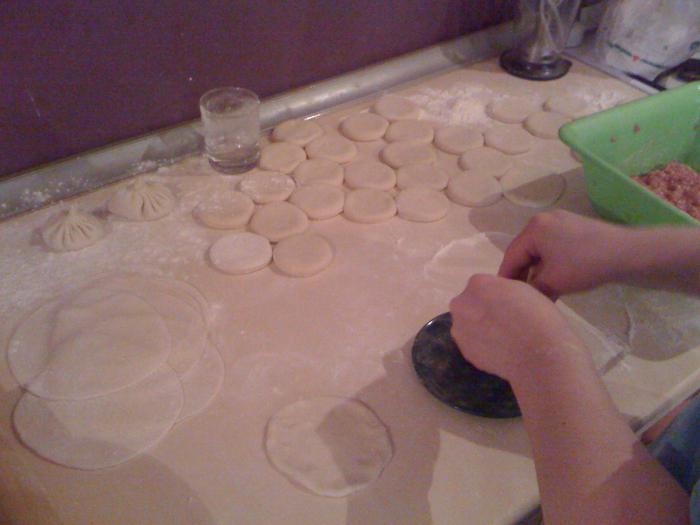
Recipe number 3
Some families add olive oil to the dough. This makes it even more elastic. And the egg makes the dough strong, so that the broth from the middle of the khinkali will not spill out during cooking. We start kneading as in the previous recipe. Sift one and a half cups of flour into a bowl. This is half of the required rate. Add a teaspoon of salt. Mix and form a volcano with a crater. Pour two or three soup spoons of olive oil into it. We also drive in one chicken egg. Slowly knead with one hand, and with the other we begin to pour cold water. You can do it a little differently. Dissolve the salt in water in advance and put it to cool. But this is an insignificant difference. When you get a homogeneous and soft mass, cover it with a towel and leave it to rest for half an hour. After that, as the recipe for khinkali dough No. 2 advises, add the remaining flour and knead for ten minutes. But, unlike the previous method, we do not start sculpting. Cover the bun again with a towel for half an hour. After this time, knead the dough again. If it still sticks to your hands, add flour.

Roll out the dough
Real housewives, when making homemade khinkali, roll out the dough for each bag separately. This can be done in two ways. The first consists in simply pinching off pieces of dough the size of a large nut from a bun. This often leads to a variety of khinkali. You can resort to the second method: form a sausage from the whole dough, cut it into slices one and a half centimeters thick. Well, the easiest way is the way we usually make dumplings or dumplings. Roll out the dough in one thin layer and use the mold to cut out round cakes. The only difference is that the pattern here is not a glass or even a glass, but a saucer. The cakes should be large - about 10-12 centimeters in diameter (like a CD) - and thin, no more than two millimeters.
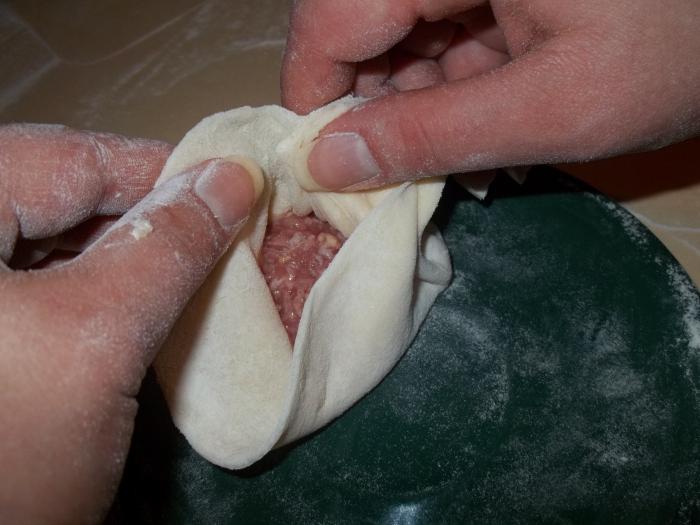
Pouch formation
The canon requires the hostess that each khinkali have at least 20 folds. And some craftswomen can bring their number to 36! How to sculpt khinkali correctly? The step-by-step recipe advises to first put a tablespoon of minced meat in the middle of the cake. Next, take two opposite ends of the circle with two fingers and connect them. Let the khinkali hang a little to make the dough stretch. Now let's remember how in childhood we folded an accordion out of a sheet of paper. The principle is the same here. We sculpt the folds one to the other at the tail, moving the cake in a circle. This is where skill is needed. Most likely, you will ruin the first ten khinkali, but over time, the skill will come. Some cooks try to shape the workpieces in a different way. They simply put the edges of the cake together and twist the bag so that it wraps like a wrapper around the candy. This method is easy, but there is one drawback. In a saucepan of boiling water, the bag can be untied as quickly as it was screwed on.
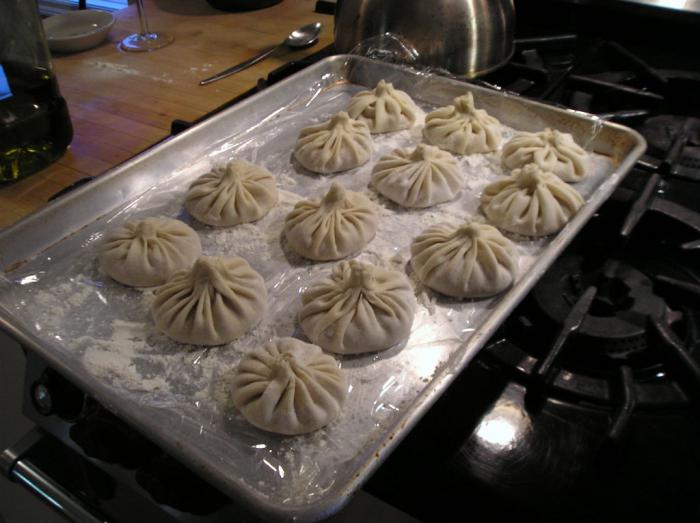
Cooking
Khinkali cooking is no different. They are cooked in the same way as regular dumplings. The only thing is, do not throw all the products into boiling salted water at once. From contact with each other, they can stick together, and the dough can break. Lower them one at a time with a slotted spoon. After the bags float up, they need to boil for about six more minutes. We put them on a large dish, sprinkle with coarsely ground black pepper. Tkemali, satsebeli or dogwood sauce can be served separately. And a bottle of khvanchkara would not hurt.
How khinkali is eaten
This dish is taken only with hands. From a puncture with a fork, the broth will flow out of the bag onto the plate, and the preparation of khinkali is a rather laborious process to allow such barbarism. After all, the numerous folds that the hostess painstakingly sculpted are a guarantee that the dough will not break. They eat khinkali like that. Take by the tail, dip the "ass" in the sauce (if any) and bite. Then the delicious, scalding broth will go straight into your mouth. Well, then eat everything else. Ponytails are allowed to be folded on the edge of the plate.




